Imagine stepping into your backyard and feeling a wave of calm and joy as you see everything perfectly in its place, from gardening tools to outdoor cushions. Whether you’re just starting to explore the wonders of outdoor living or you’re a seasoned pro seeking fresh inspiration, our guide, “14 Garden Storage Ideas for Your Next Project,” is your ticket to transforming clutter into charm.
These practical storage solutions not only enhance the beauty of your outdoor space but also maximize its functionality, allowing you more time to enjoy the sun and the serenity of your garden. From clever DIY projects to stylish, ready-made options, you’ll discover ideas that boost both your confidence and your garden’s potential. Get ready to embrace the joy of a beautifully organized outdoor oasis!
Maximize Vertical Wall Storage
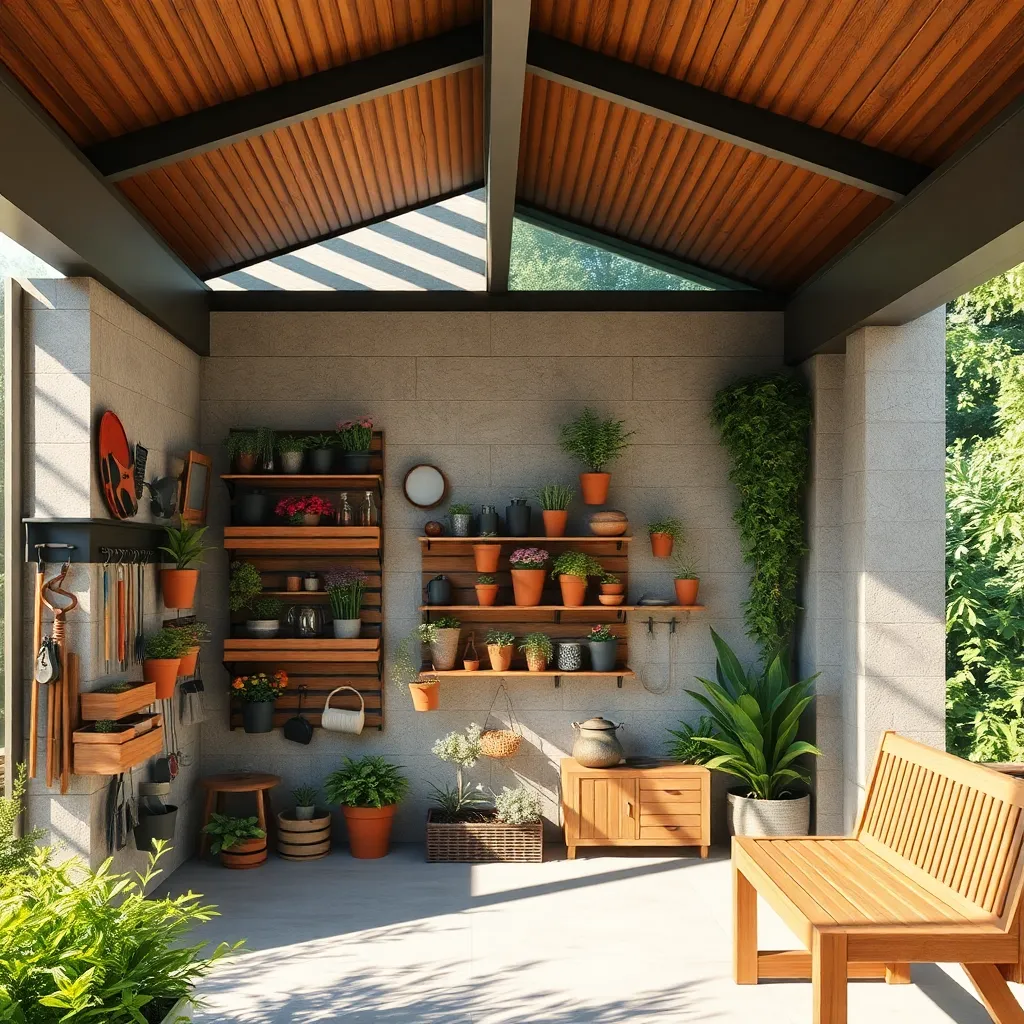
To make the most of your garden’s vertical space, consider installing sturdy shelving units on the walls of your outdoor shelter. Opt for weather-resistant materials like treated wood or metal to ensure longevity. Beginners might start with simple, pre-made shelves, while more experienced DIYers could build custom units to fit specific tools and accessories. Consider adding hooks or pegboards for hanging smaller items, which will keep your storage neat and make everything easily accessible.
For those looking to maximize storage with a touch of style, incorporating vertical planter walls can be both functional and decorative. Use durable materials like cedar or recycled plastic for long-lasting results and ensure the structures are securely anchored to handle the weight of pots and plants. Advanced gardeners might integrate an irrigation system into their vertical planter for easy maintenance. With these elements, you can transform your shelter walls into an attractive and practical storage solution.
Utilize Multi-Functional Furniture Pieces
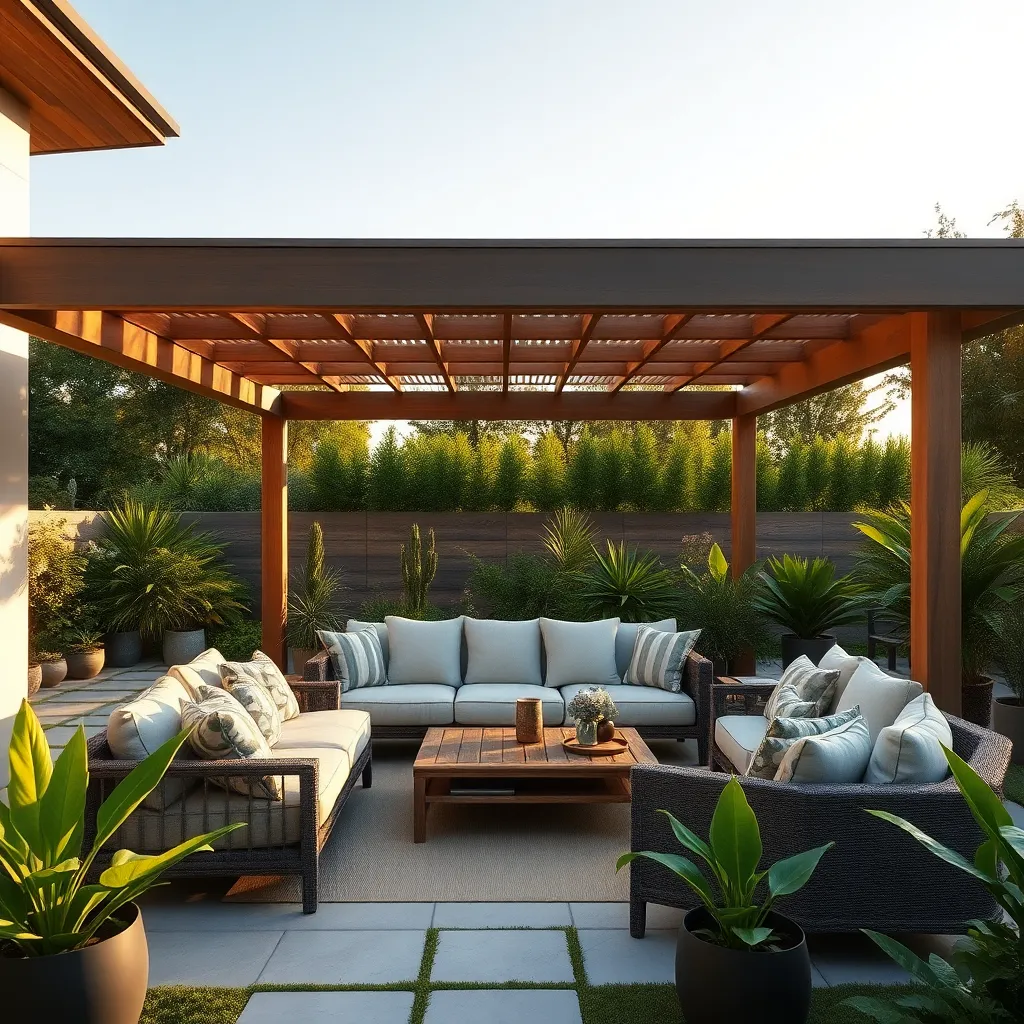
Incorporating multi-functional furniture pieces into your garden can significantly enhance your outdoor space while providing much-needed storage. Consider investing in a sturdy, weather-resistant bench with a built-in storage compartment. Materials like treated wood or metal ensure durability against the elements, and a hinged top makes it easy to store cushions, garden tools, or children’s toys discreetly.
For those with a knack for DIY projects, creating a custom storage table with a removable top can be a rewarding endeavor. Using pallets or reclaimed wood can add a rustic charm, while incorporating wheels offers flexibility to move the piece around your garden. Beginners can start with simple designs, while seasoned DIYers might add features like lockable compartments for added security.
Incorporate Hidden Storage Benches
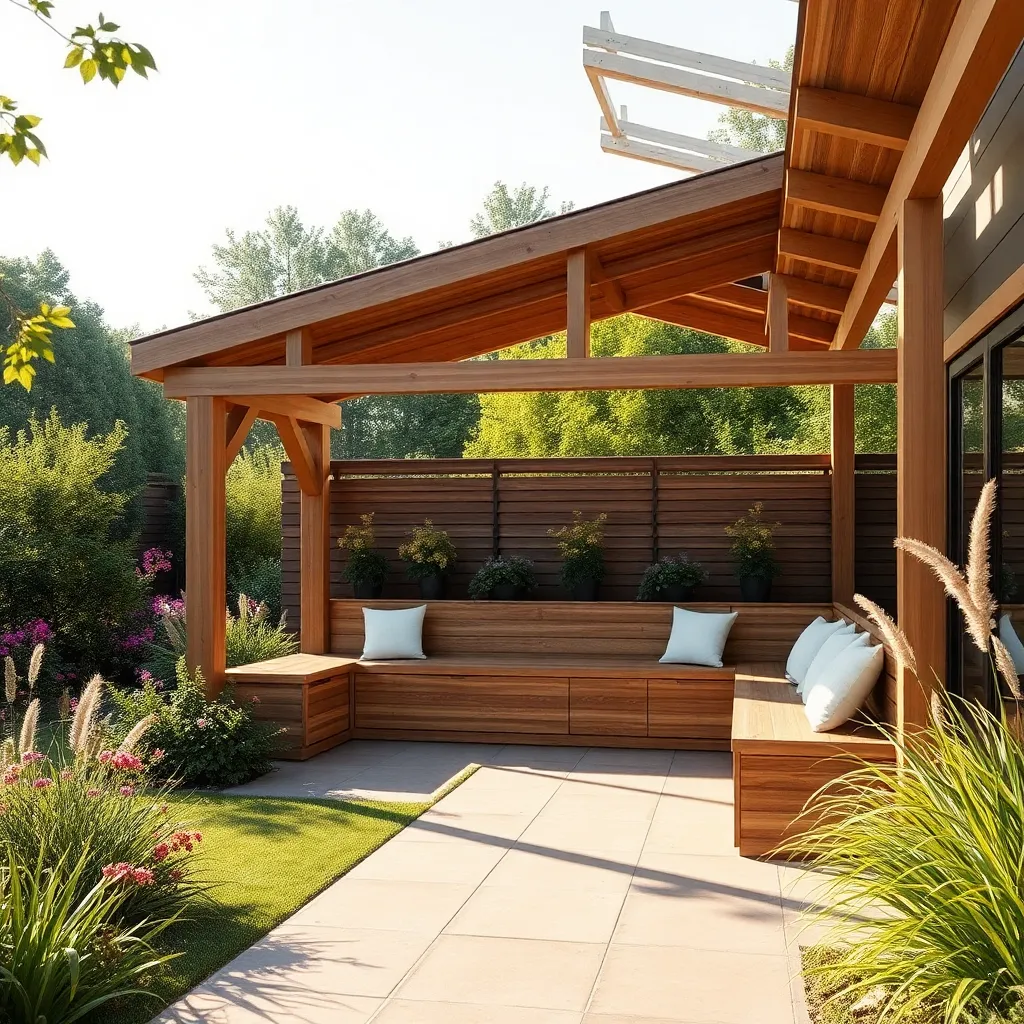
Transform your garden seating into a clever storage solution by incorporating hidden storage benches. These benches not only provide a comfortable place to relax but also maximize your space by storing garden tools, cushions, or other outdoor essentials. Opt for weather-resistant materials like teak, cedar, or powder-coated metal to ensure durability against the elements. Beginners can start with pre-made benches that feature hinged lids, while more experienced DIY enthusiasts might consider customizing their bench dimensions to fit specific storage needs.
For an advanced touch, consider adding built-in drainage holes or a slatted base to prevent moisture buildup inside the storage compartment. Ensure the bench is both functional and aesthetically pleasing by coordinating its design with your garden’s overall theme. Paint or stain the wood to match your outdoor décor, and use weather-resistant cushions for added comfort. By combining style with practicality, hidden storage benches can seamlessly blend into your garden while offering a discreet solution for reducing clutter.
Install Overhead Shelving Units
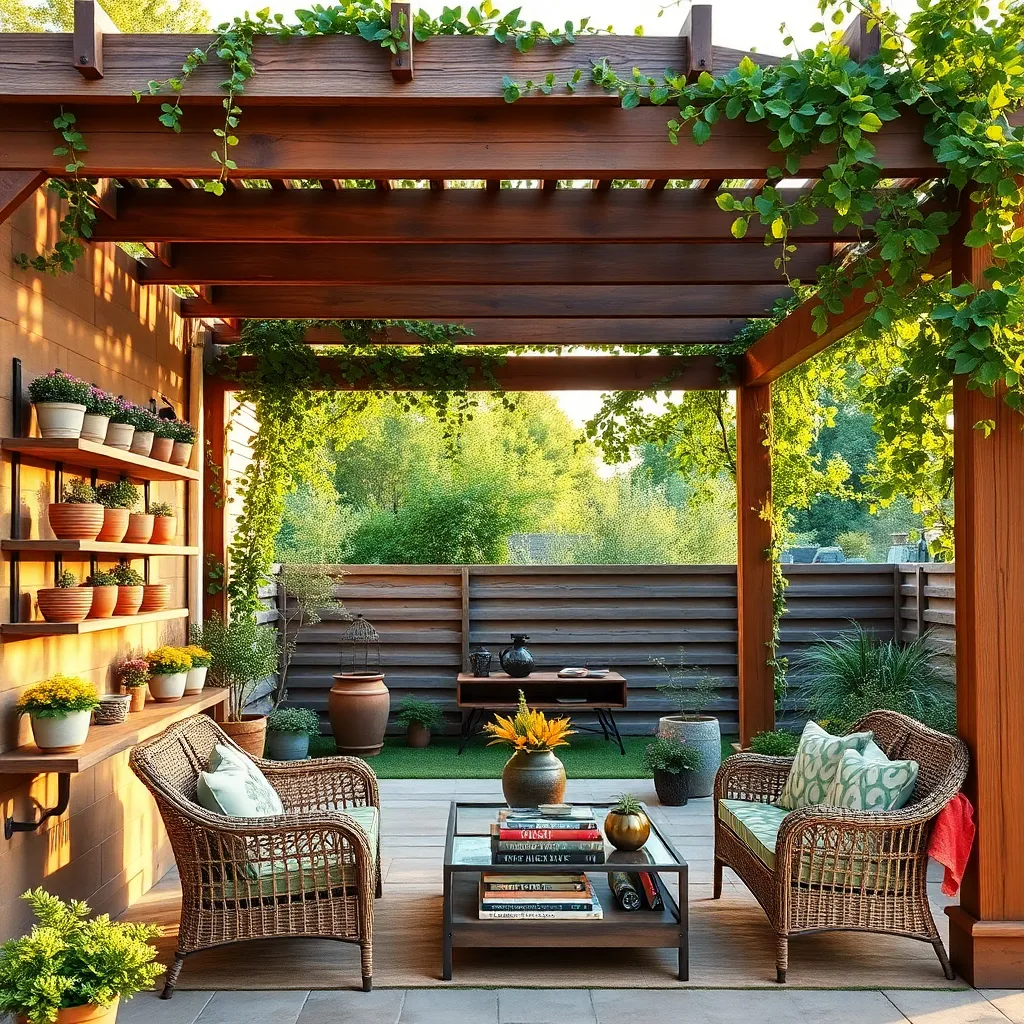
Overhead shelving units can transform your outdoor shelter into an organized haven, maximizing vertical space while keeping garden tools and supplies off the ground. Opt for weather-resistant materials like treated wood or powder-coated metal to ensure durability against the elements. For a beginner-friendly project, consider prefabricated shelving units that can be easily installed with basic tools. Place the shelves at a height that is easy to reach but high enough to avoid headspace interference, typically around 6 to 7 feet from the ground.
To enhance functionality, install adjustable shelving brackets that allow you to customize the height and spacing based on your storage needs. Advanced gardeners might integrate hooks beneath the shelves for hanging items like hoses or small hand tools. Consider adding a protective finish to wooden shelves or a rust-proof coating to metal ones for added longevity. For a polished look, coordinate the shelving with the existing color scheme of your outdoor space, making it a cohesive part of your garden design.
Create Storage With Planter Boxes

Transforming your garden space with planter boxes that double as storage provides a stylish and functional solution for outdoor organization. Begin by choosing materials like weather-resistant wood or composite that can withstand varying climates. Opt for a design that includes a hinged lid, allowing easy access to stored items while maintaining the aesthetic appeal of a cohesive garden feature. For beginners, consider premade options or DIY kits, which simplify the construction process.
More advanced gardeners can personalize their planter boxes by integrating features such as built-in drainage systems or incorporating vertical trellises for climbing plants. When constructing your own, aim for dimensions that suit your space and storage needs, typically ranging around 2 to 3 feet in length and 1.5 feet in height. Secure the lid with weatherproof hinges and add a lock for extra security. This dual-purpose solution not only enhances the beauty of your garden but also maximizes utility by providing hidden storage for tools, hose reels, or seasonal decorations.
Use Waterproof Storage Containers
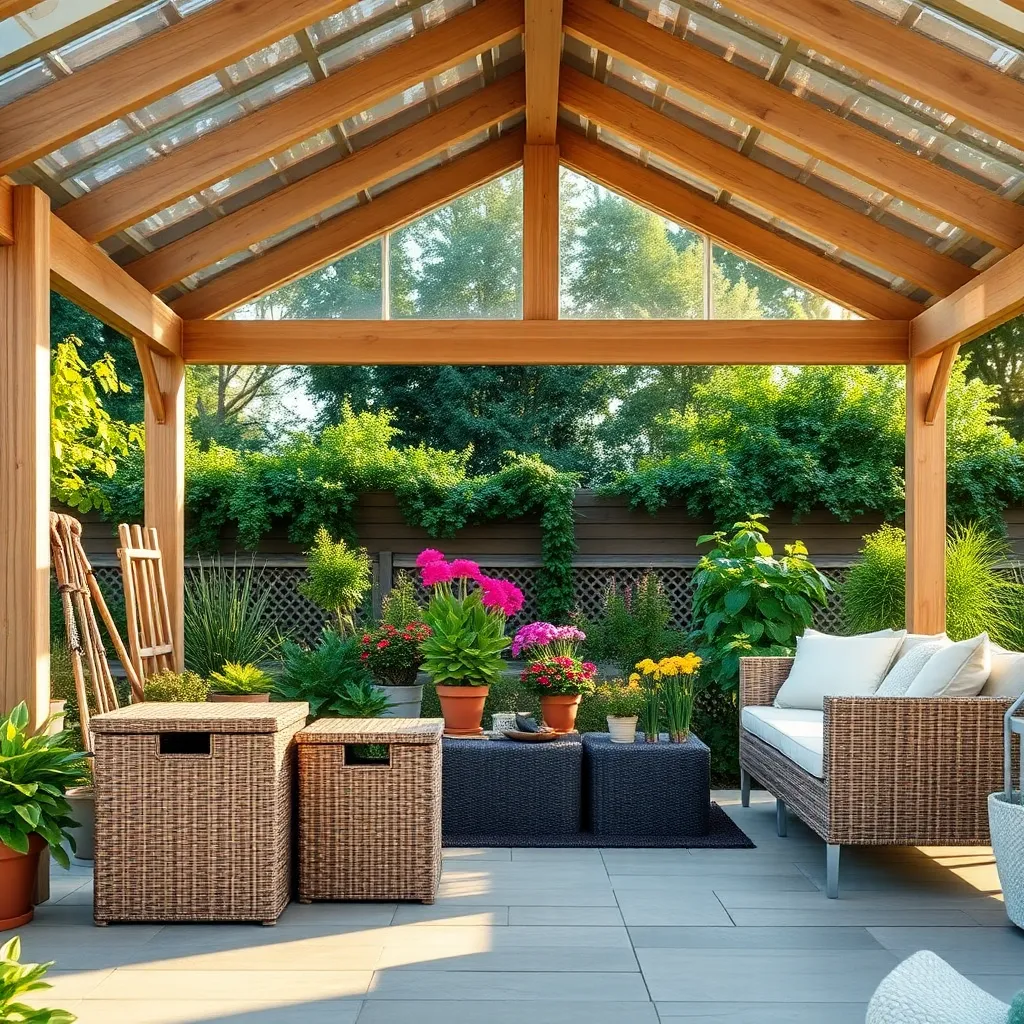
When it comes to organizing your garden space, using waterproof storage containers is a practical and effective solution. These containers protect your tools, seeds, and other gardening supplies from the elements, ensuring they remain in good condition year-round. Consider using high-density polyethylene or heavy-duty resin containers, as these materials are not only durable but also resistant to UV rays and moisture. For beginners, start with containers that have lockable lids to keep contents secure and prevent water ingress.
To enhance functionality, place these containers strategically around your garden, such as near the tool shed or close to raised beds for easy access. For those looking to elevate their garden’s aesthetic appeal, you can opt for containers in neutral tones or those with natural wood finishes to blend seamlessly with your outdoor decor. Advanced gardeners might consider customizing containers with shelving or dividers inside to maximize storage space efficiently. By integrating these practical storage solutions, you’ll keep your garden tidy and your tools ready for use at any time.
Add Hooks for Tool Organization
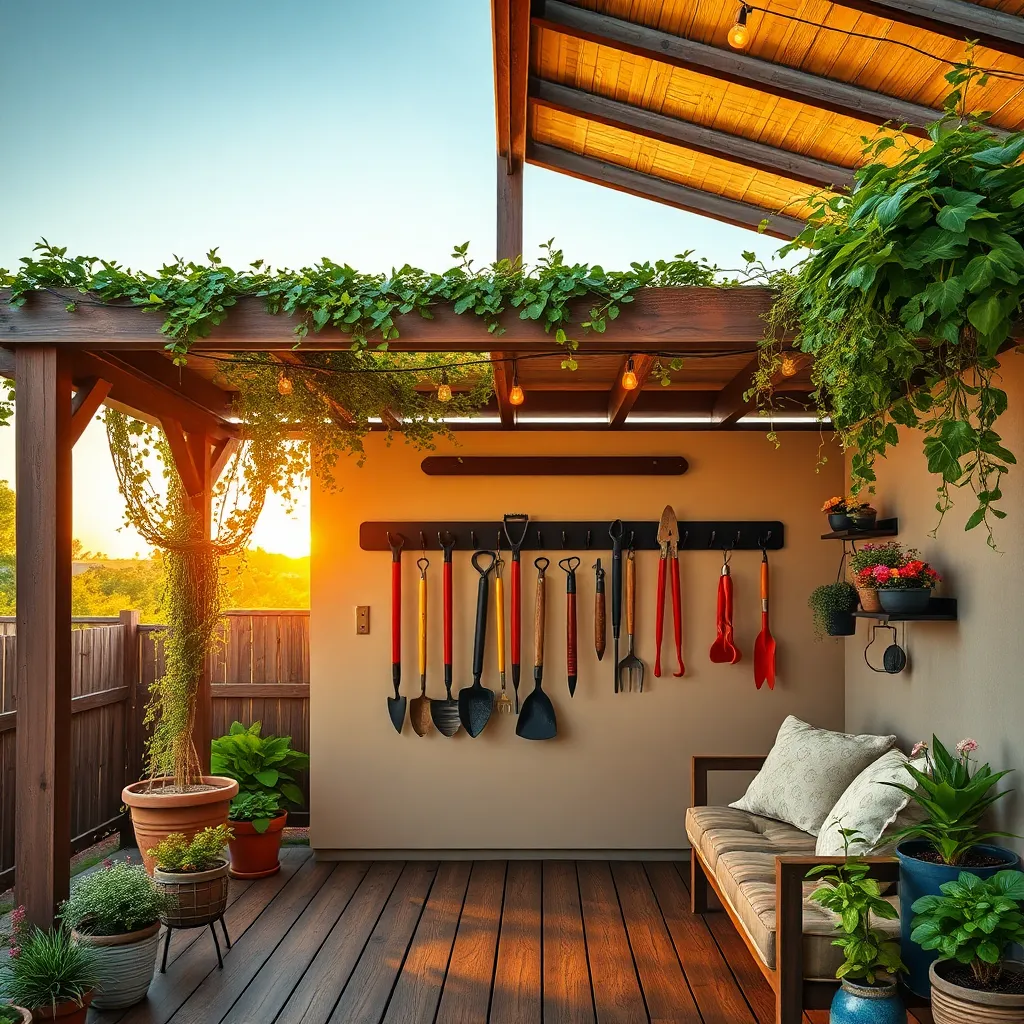
Maximize your outdoor shelter’s functionality by adding hooks for tool organization. Hooks are easy to install and can hold a variety of garden tools, such as shovels, rakes, and hoses, keeping them off the ground and within reach. Opt for durable materials like galvanized steel or coated metal hooks, which are resistant to rust and can withstand outdoor conditions. Beginners can start by installing a simple row of hooks, while more advanced DIYers might create a customized pattern to fit specific tool sizes or add a pegboard for extra versatility.
When choosing a location for your hooks, consider placing them at a comfortable height to avoid unnecessary bending or reaching. Space the hooks adequately apart—typically 12 to 16 inches—to accommodate larger tools and prevent overcrowding. For those with limited space, consider using double-sided hooks or stacking hooks vertically to maximize storage capacity. By organizing your tools with hooks, you not only enhance the aesthetic appeal of your outdoor shelter but also improve safety and efficiency in your gardening tasks.
Design Sheltered Bike Racks
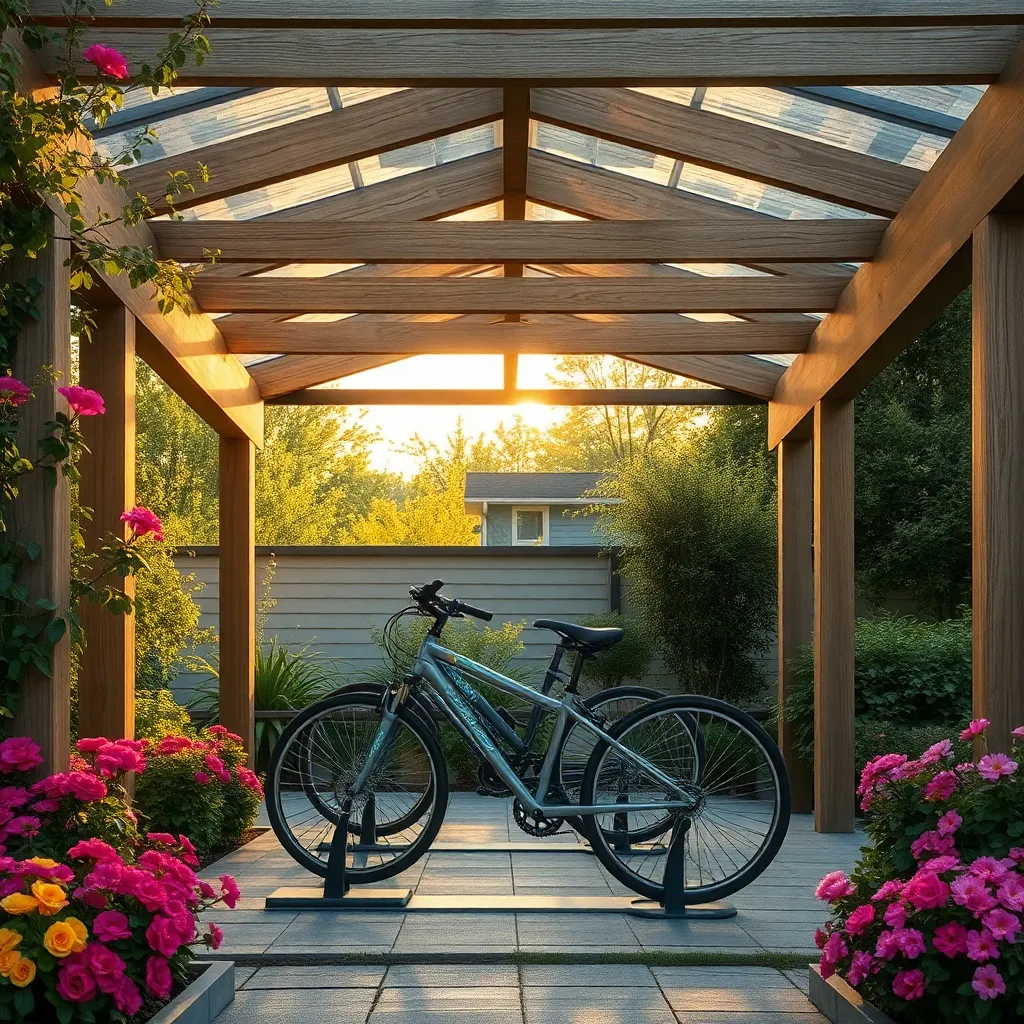
Designing a sheltered bike rack in your garden not only protects your bicycles from the elements but also adds a touch of organization and style. Consider using durable materials like galvanized steel or treated wood to ensure longevity. If you’re a beginner, start with a simple lean-to structure that requires minimal construction skills and basic tools. For those with more experience, integrating a green roof or climbing plants can enhance the aesthetic appeal while offering additional shade.
To maximize functionality, ensure that the shelter is at least 5 feet deep and 6 feet wide to comfortably accommodate multiple bikes. Use a sloped roof design to facilitate water runoff, preventing damage to your bikes and the structure. Advanced builders can incorporate solar lighting or a lockable door for added security. Keep the design open on the sides for better air circulation, reducing the likelihood of rust. This project is a practical way to blend utility with creativity in your garden space.
Build a Custom Storage Shed
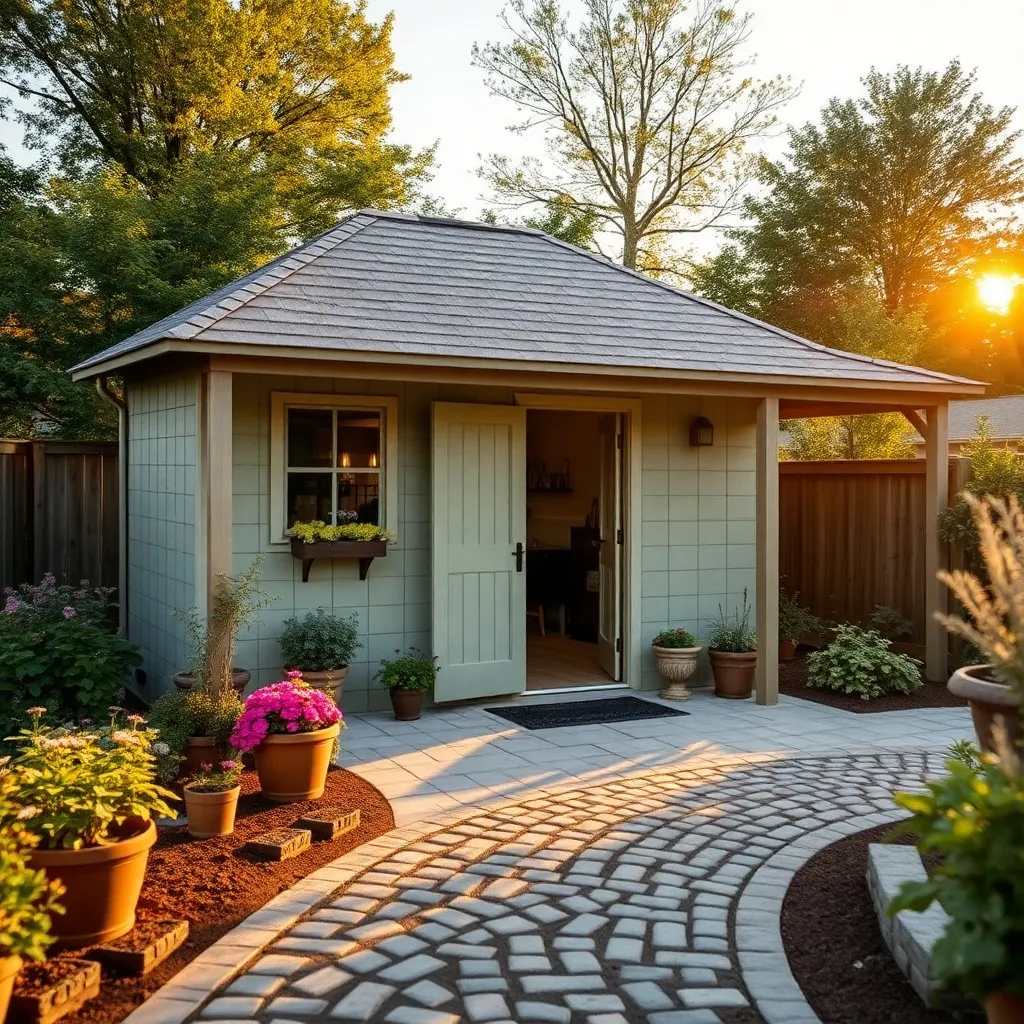
Building a custom storage shed is a rewarding project that can enhance your garden’s functionality while offering a tailored solution for your storage needs. Start with a solid foundation, such as a concrete slab or pressure-treated wood, to ensure durability. Choose weather-resistant materials like cedar or treated plywood for the structure, as these will withstand the elements and reduce maintenance. Beginners can opt for simple designs with a gabled roof, while more advanced DIYers might explore adding skylights or customized shelving inside for increased utility.
Consider the shed’s size and location carefully, ensuring it fits seamlessly into your garden’s layout and complies with local zoning regulations. Standard dimensions for a small garden shed are around 6×4 feet, which is ample for basic tools and equipment. For those with more expertise, integrating features like double doors or a ramp can provide easy access for larger items like lawnmowers. Remember to incorporate ventilation, such as vents or windows, to prevent moisture buildup and keep your storage items in pristine condition.
Opt for Stackable Storage Bins
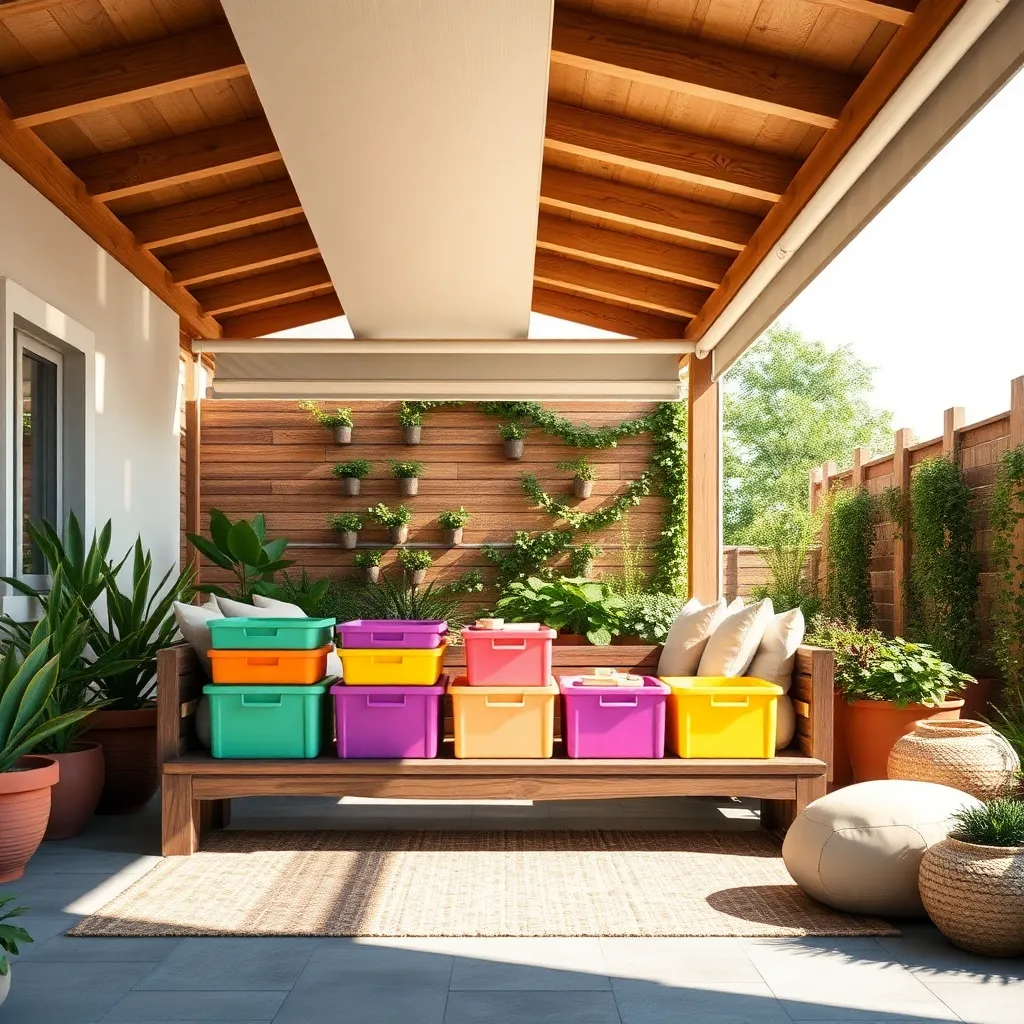
Stackable storage bins are a versatile and efficient solution for organizing your garden tools and supplies. They help maximize limited space by allowing you to utilize vertical storage, keeping your garden area tidy and accessible. Choose durable materials like heavy-duty plastic or weather-resistant resin to ensure longevity and protection from the elements. For beginners, starting with clear bins can make it easier to locate items quickly, while more experienced gardeners might prefer color-coded bins to categorize different types of supplies.
Design your outdoor storage setup by selecting bins that fit your specific needs and available space. Consider stackable bins with locking lids to keep contents secure and protected from pests. If you have larger tools, opt for bins with customizable dividers or compartments to accommodate various sizes. Advanced gardeners can enhance their storage by labeling each bin or using a bin rack system for even more organization. This practical approach not only streamlines your gardening tasks but also adds a neat, professional look to your outdoor area.
Implement Modular Storage Solutions
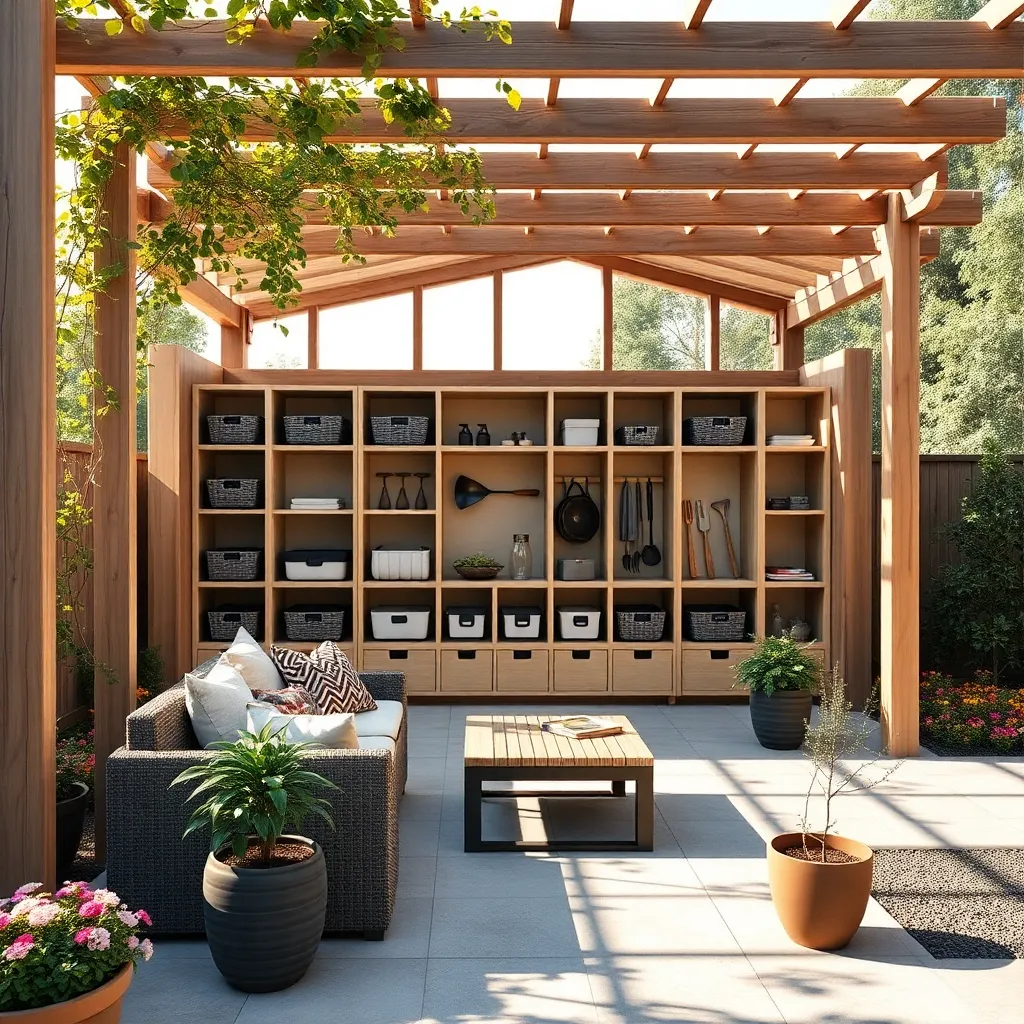
Modular storage solutions offer a versatile way to keep your garden organized while maximizing space. Consider using weather-resistant materials such as treated wood or galvanized metal for longevity. These materials are not only durable but also add a touch of rustic charm to your outdoor space. To create a customized setup, look for units with adjustable shelves and stackable components, allowing you to easily adapt the storage to your evolving needs. For beginners, start with a few basic units and expand as your garden grows.
For those looking to enhance both functionality and aesthetics, consider integrating modular storage into existing structures like pergolas or garden sheds. Advanced gardeners can add features such as sliding doors or lockable compartments for added security and convenience. Ensure each module is securely anchored, particularly in areas prone to wind. Choosing the right dimensions is crucial; standard units often measure around 30 inches wide and 18 inches deep. This size is sufficient for most tools and equipment, but always measure your space to ensure a perfect fit. Implementing these solutions will not only keep your garden tidy but also make your outdoor projects more enjoyable and efficient.
Repurpose Old Cabinets for Outdoors
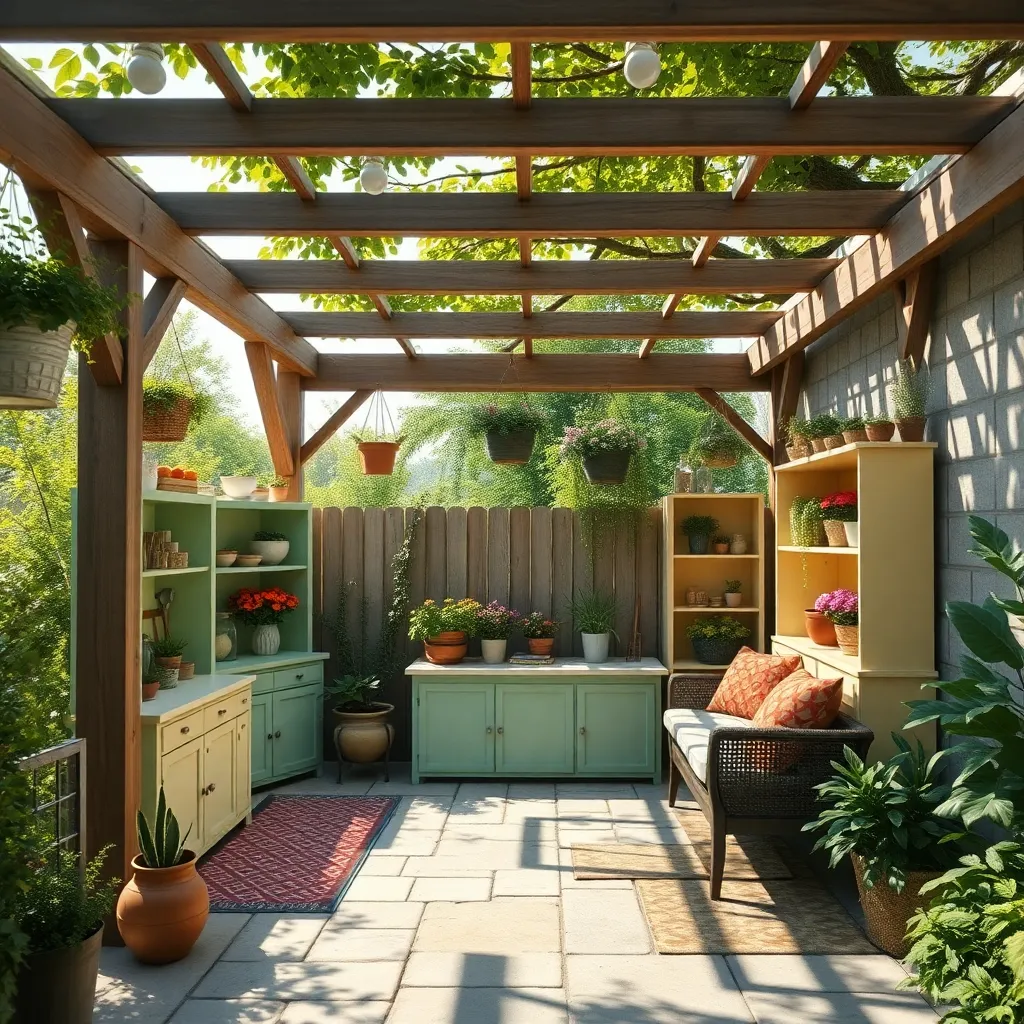
Consider repurposing old cabinets as a cost-effective solution for outdoor storage in your garden. Begin by selecting cabinets made of durable materials such as solid wood or metal, which can withstand the elements better than particleboard. To protect against moisture, apply a weatherproof sealant or exterior-grade paint. If the cabinet doors are in good condition, keep them to shield your tools or garden supplies from rain, or remove them to create open shelving for easy access.
For a more advanced approach, customize the interior of your cabinets with shelves or hooks to maximize storage. Adding casters to the base can transform your cabinets into mobile units, allowing you to easily reposition them as needed. Ensure the cabinets are anchored securely if they will be stationary, especially in windy areas. With a bit of creativity, these repurposed cabinets can blend seamlessly into your garden’s aesthetic while providing functional storage.
Construct Pallet-Based Storage Systems

Utilizing pallets for outdoor storage is an economical and environmentally friendly solution. Start by sourcing sturdy wooden pallets, ensuring they are heat-treated (marked with “HT”) for safe outdoor use. Arrange them vertically or horizontally to form the walls of your storage unit, depending on your space requirements. Use durable screws and brackets to secure the pallets together, creating a strong framework. For added stability, consider anchoring the structure to the ground using metal stakes or L-brackets.
Enhance your pallet storage system by incorporating shelves, hooks, or even doors. Cut additional wood to fit within the pallet slats for customized shelving that can hold tools, pots, or gardening supplies. To protect your items from the elements, add a simple roof using corrugated metal or a waterproof tarp, which can be attached using roofing nails or heavy-duty staples. For a more polished look, consider painting or staining the pallets to match your garden’s aesthetic, transforming this practical structure into an attractive feature.
Integrate Storage With Garden Seating

Integrating storage with garden seating is a clever way to maximize space and functionality in your outdoor area. Consider building a wooden bench with a hinged lid that opens to reveal hidden storage—perfect for keeping garden tools or cushions. Choose durable materials like cedar or treated pine to ensure the bench withstands the elements. Beginners can start with a simple box frame design, while more experienced DIYers might incorporate additional features such as armrests or a slatted back for added comfort.
For a seamless look, use the same wood stain or paint color on both the storage bench and other garden furniture. Position the bench strategically in your garden, perhaps against a wall or as a focal point in a corner, to create a cozy nook. Adding cushions or throws will not only enhance comfort but also bring a pop of color to the space. For advanced design, integrate built-in planters on either side of the bench to merge seating with greenery, creating a harmonious and inviting garden atmosphere.
Conclusion: Creating Beautiful Outdoor Spaces
As we conclude this enlightening journey through ’14 Garden Storage Ideas for Your Next Project,’ it’s clear that creating a harmonious outdoor space is much like nurturing a relationship. From utilizing vertical storage and multi-functional furniture to embracing creativity with recycled materials and hidden compartments, each concept mirrors essential relationship skills—organization, creativity, adaptability, and effective use of resources.
To bring these insights into your personal life, why not start by choosing one idea that resonates with you and implement it today? Whether it’s clearing clutter or introducing a new system of organization, taking that first step can inspire momentum in both your garden and your relationships.
Remember, every relationship thrives on continuous growth and attention. By saving or bookmarking this article, you’re equipping yourself with a toolkit to revisit, reflect, and refine your strategies whenever needed.
Looking ahead, let this be the cornerstone of many successful projects—in your garden and your relationships. Embrace the journey of transformation, and watch as both your personal spaces and connections flourish. Here’s to nurturing and cultivating relationships that bloom beautifully, season after season.
